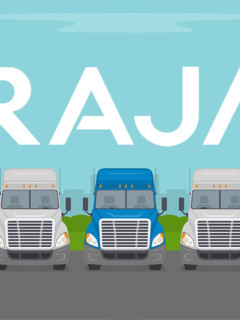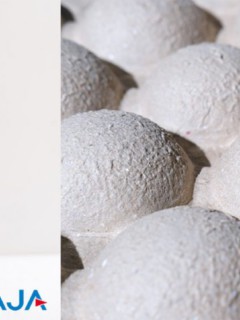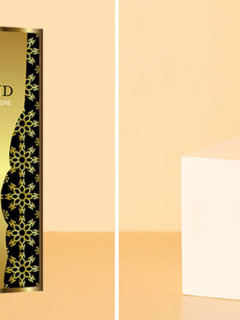A study by the management consultancy McKinsey proves it: Germany is the leader in the number of parcels sent. With 24 parcel shipments per year and per capita, we are way ahead in international comparison (Great Britain: 22, the Netherlands, for example, only 12).
However, these figures are based only on parcels sent to “private individuals”. However, we can only guess at the amount of cartons that are filled, padded, sealed and transported every day in the so-called B2B business. Why paper packing tape is one of our favourites for sealing cartons, we reveal here.
With such an immense amount of parcels being sealed and opened every day and subsequently disposed of, it is important to keep the following aspects in mind: Handling (ease of use when applying), security (how reliably does the tape hold – and how tamper-proof is it?), convenient opening (particularly relevant for the end consumer, who may open without tools), and last but not least: The simple and, above all, ecologically as harmless as possible disposal.
Single-materiality as an advantage
Let’s roll the whole thing up from behind: The whole, Large number of cartons has to be disposed of and recycled after use. Here the Paper packaging tape clearly comes out on top: by using paper tape instead of PVC or PE tape, the amount of plastic waste is significantly reduced. Moreover, thanks to the single-material packaging (the environmentally friendly adhesive tape and cardboard can be recycled together!), recycling by type is possible. Ideally, paper padding was also used to cushion the package, then everything can actually be disposed of together via the waste paper and recycled without costly separation processes.
Customers like paper
This argument for more sustainability is also appreciated by consumers. According to a GfK survey, almost 80 per cent of consumers feel that paper-based packaging is more environmentally friendly than packaging made of plastic. Three quarters demand packaging that is above all recyclable. Seen in this light, using paper wherever possible is the way to go. Especially in Germany, where paper, cardboard and carton are collected and recycled more efficiently than in almost any other country by private households and, above all, the business community – in other words, the raw material is available.
But are ecological arguments and high customer acceptance enough? What about adhesive strength and safety?
Can a paper adhesive tape meet all the requirements for a parcel tape?
The type of closure plays a very central role in secure shipping or transport. The box is almost always sealed with an adhesive tape. And this gets a lot of work, because the adhesive tape has to withstand the entire weight load of the package when the carton is lifted: The carton is usually closed at the top as well as at the bottom with adhesive tape, i.e. when it is lifted, great forces act on the adhesive tape that holds the carton together at the bottom.
Whether the adhesive tape will withstand these forces is revealed by the information on these terms:
- Instant adhesion (adhesion) – the initial adhesive strength: It says nothing about the adhesive strength per se, but provides information about how quickly the adhesive used hardens after application. A low adhesion can be advantageous because the position of the tape can possibly be corrected again – even if this is not necessarily recommended in terms of adhesive strength.
- Adhesive strength (cohesion) – the adhesive strength of a tape after the bond to the substrate material is “final”, i.e. it has developed its full adhesive effect.
- Shear strength – indicates how quickly your product “slips” on a bonded surface.
- Tear strength – indicates the load under which the adhesive tape tears and thus the elongation at break: How elastic is the adhesive tape?
The adhesive power of adhesive tape
This is the force needed to pull off a strip of adhesive tape. It also varies, of course, depending on the substrate and the correct type of application. It is usually measured on a 25 mm wide adhesive strip and has the unit N/25mm. Clearly, the higher the adhesive strength, the better the bond with the substrate material, in our case mostly cardboard. An adhesive tape with a high adhesive strength that has bonded cleanly and over the entire surface of the cardboard will also withstand high weight loads.
To ensure that data on adhesive strength are comparable, they are subject to the EN 1939:2003 standard, which stipulates, among other things, that measurements are taken under laboratory conditions and on polished steel.
The tear strength of adhesive tape
Tear strength, on the other hand, is independent of adhesive strength. It indicates the percentage by which an adhesive tape extends or stretches under load before it tears. Tear strength (or elongation at tear) is therefore purely material-dependent. The main factor here is the backing material: Paper? Fabric? Foil?
Paper tape has a comparable tear strength to PP tape and is therefore ideal for sealing light to medium-weight cardboard boxes. Up to 30 kg is no problem – for weights above that, the thread-reinforced paper packing tape offers even more tear strength.
Wet adhesive tape even stands out for its extremely high tear strength: Even with high temperature fluctuations and unfavourable climatic influences, it adheres excellently to recycled cardboard, for example – and can take loads of up to 75 kg (!!!). If the forces become too great, it will tear without having stretched beforehand. This is because wet adhesive tape has almost no stretch (less than 4%). A disadvantage?
Not necessarily. Because:
Low elongation force protects against manipulation!
With increasing pressure on the bonded cardboard walls, film adhesive tape gives way. It expands. The box remains closed, but the lid flaps open depending on the elasticity of the tape and small, unfixed contents could fall out. Not so the paper tape: it holds the carton flaps together until it gives way under the forces and tears. However, due to the high strength – especially of thread-reinforced paper tapes – this only occurs under extreme stress.
What is wet adhesive tape? And why is it particularly tamper-proof?
Wet adhesive tape forms an inseparable bond with the carton to be sealed. This means that when Wet adhesive tape detachment is not possible. To open the box, the tape must be destroyed and residue remains on the box. It is simply impossible to open the box unnoticed to take a look (or even to reach inside!). Our thread-reinforced wet adhesive tape guarantees additional double security.
Can paper tape be printed?
Yes! Even when using paper packing tape, you don’t have to do without “colour”. Both paper packing tape (standard and thread-reinforced) and wet adhesive tape can be printed with a logo. Compared to printed paper tape, printed wet tape offers another advantage: since, as mentioned above, it does not expand under stress, the logo is perfectly legible even if the parcel tape has been exposed to great forces. With the film versions, it can happen that your logo stretches and becomes undesirably “wide”.
The history of tape
The History of adhesive tape on the other hand “stretches” far into the past. An adhesive bandage developed in 1901 by Oscar Troplowitz for the company Beiersdorf AG (known as “Leukoplast”) is considered the “forefather” of adhesive tape as we know it today and use it millions of times. Around 20 years later, in 1923, Richard Gurley Drew, an engineer for 3M, began experimenting with a paper crepe tape coated with adhesive at the edges. In 1930, the first transparent adhesive tape was used.















